Provençal style extendable oak table, early 20th century
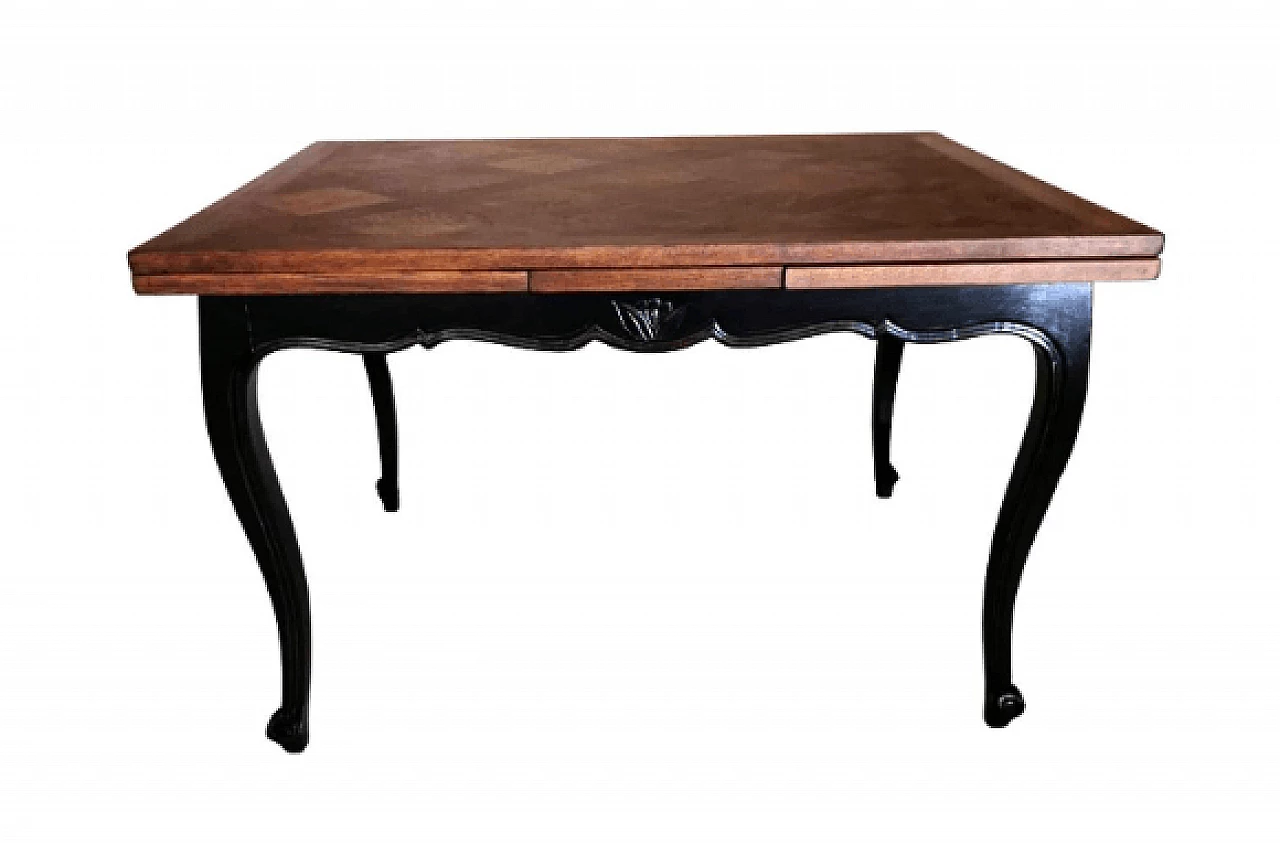
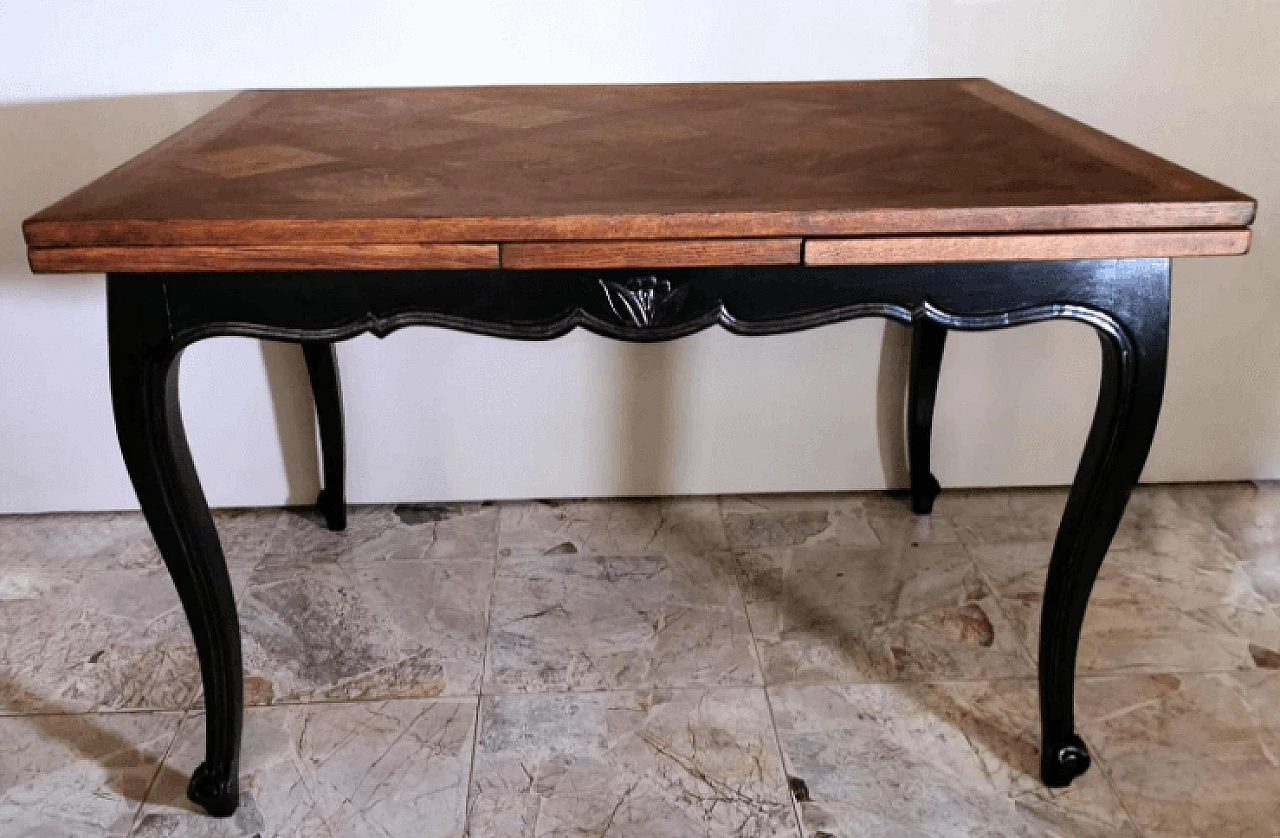
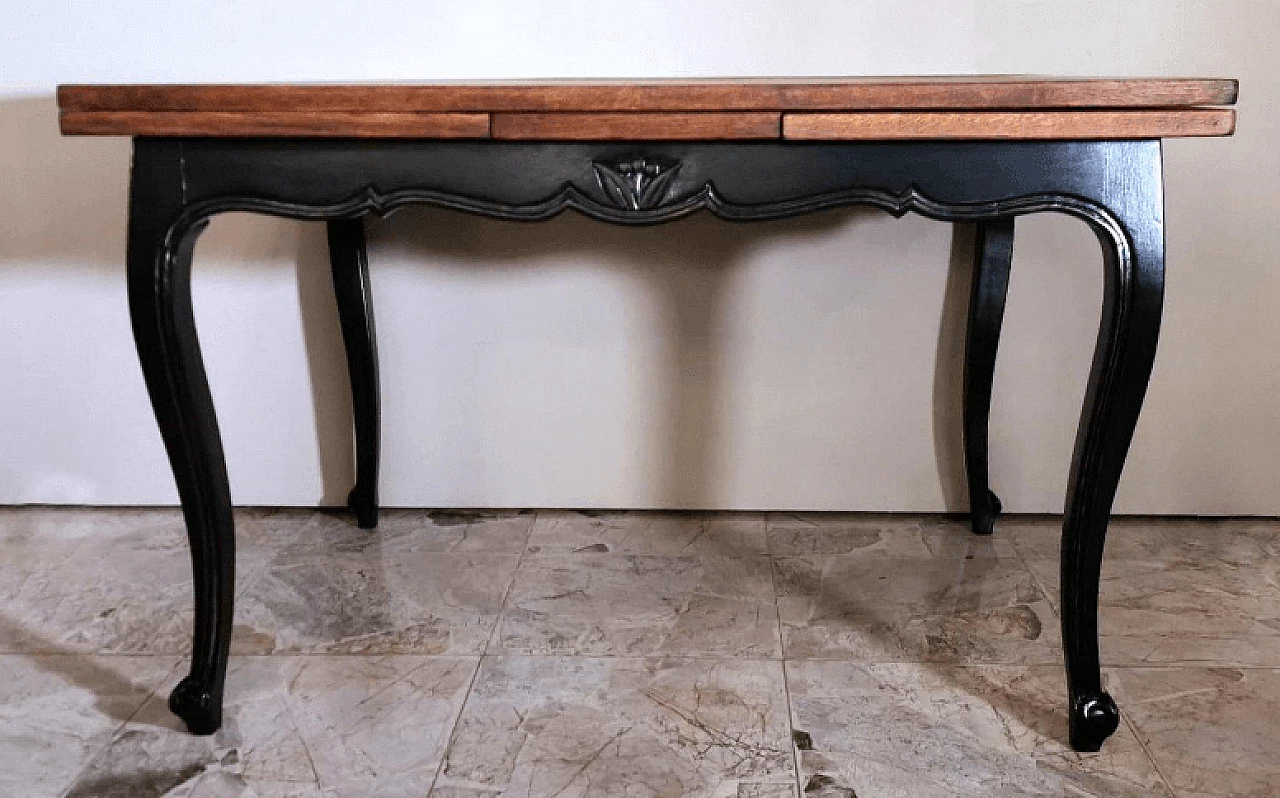
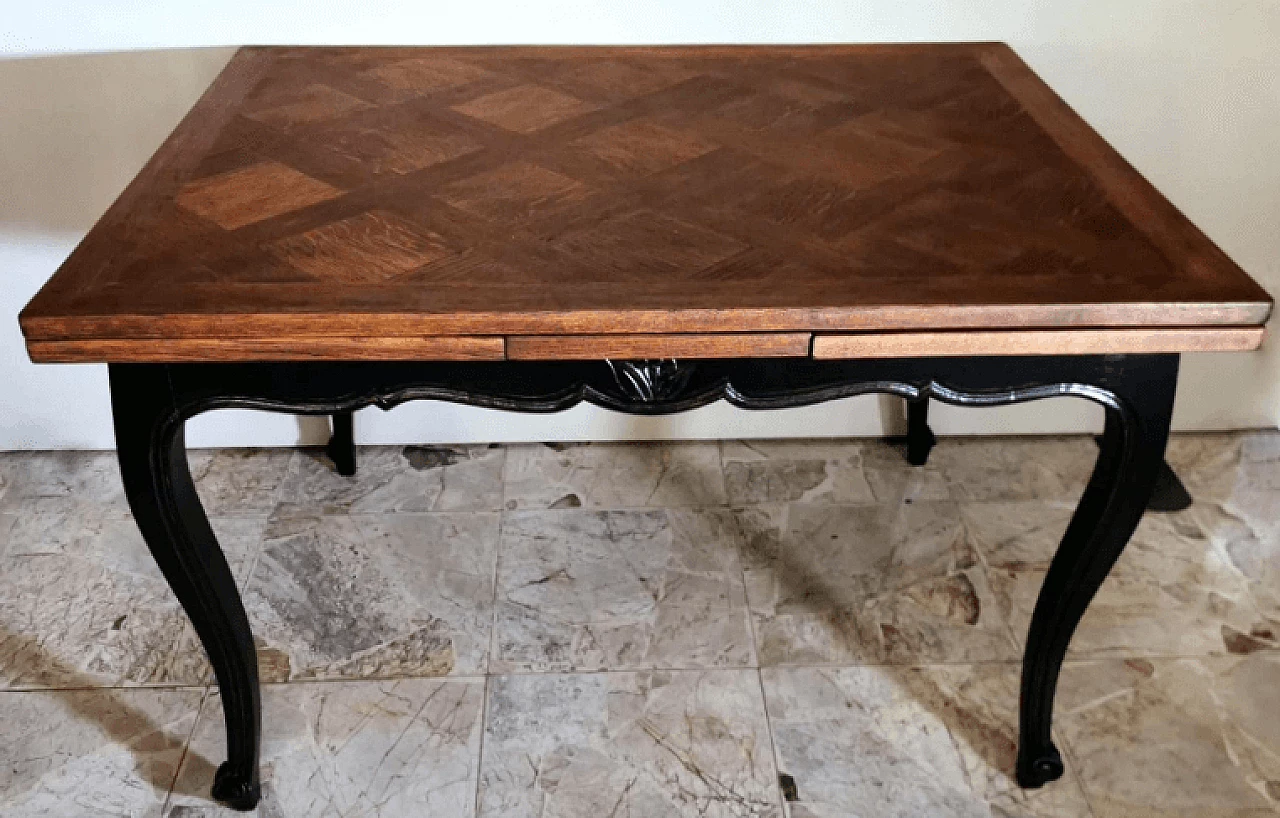
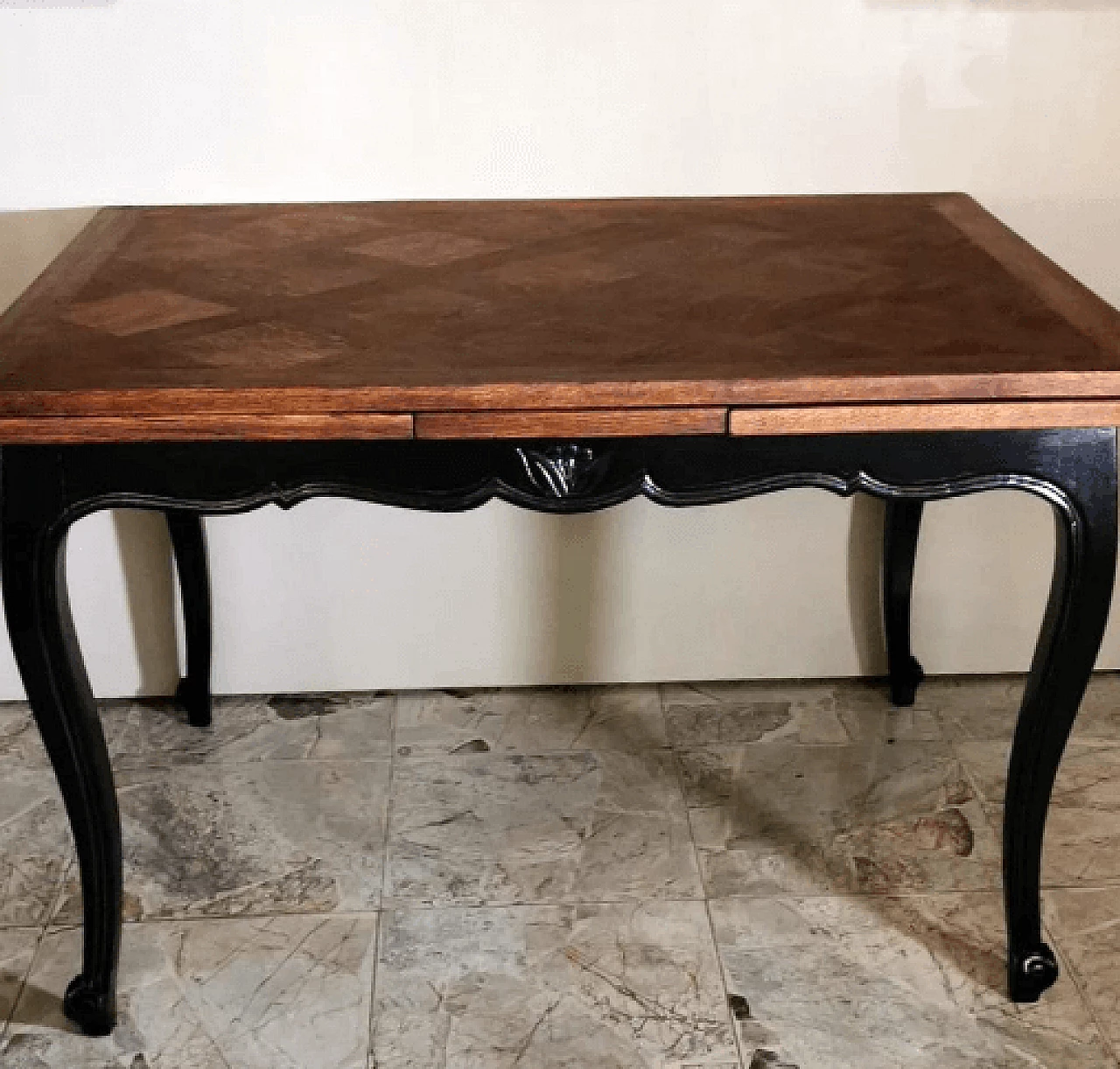
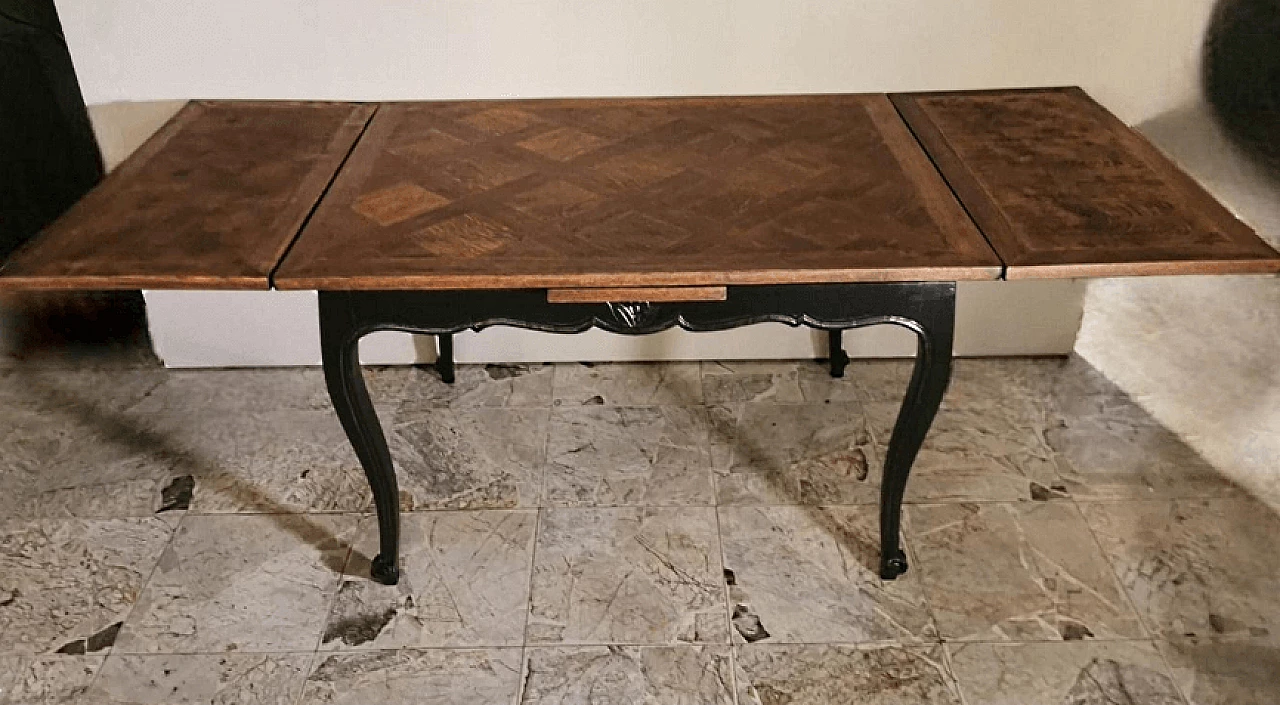
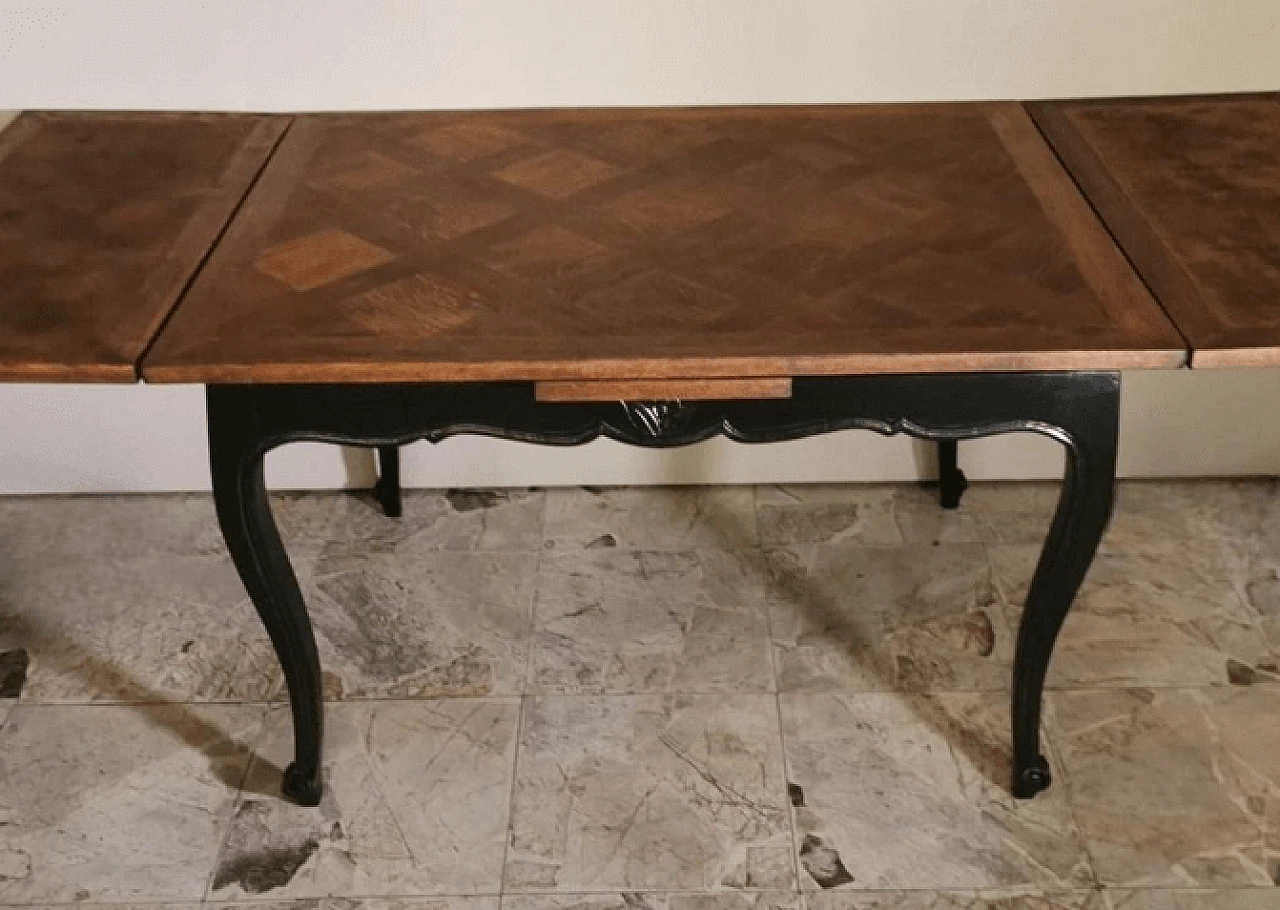
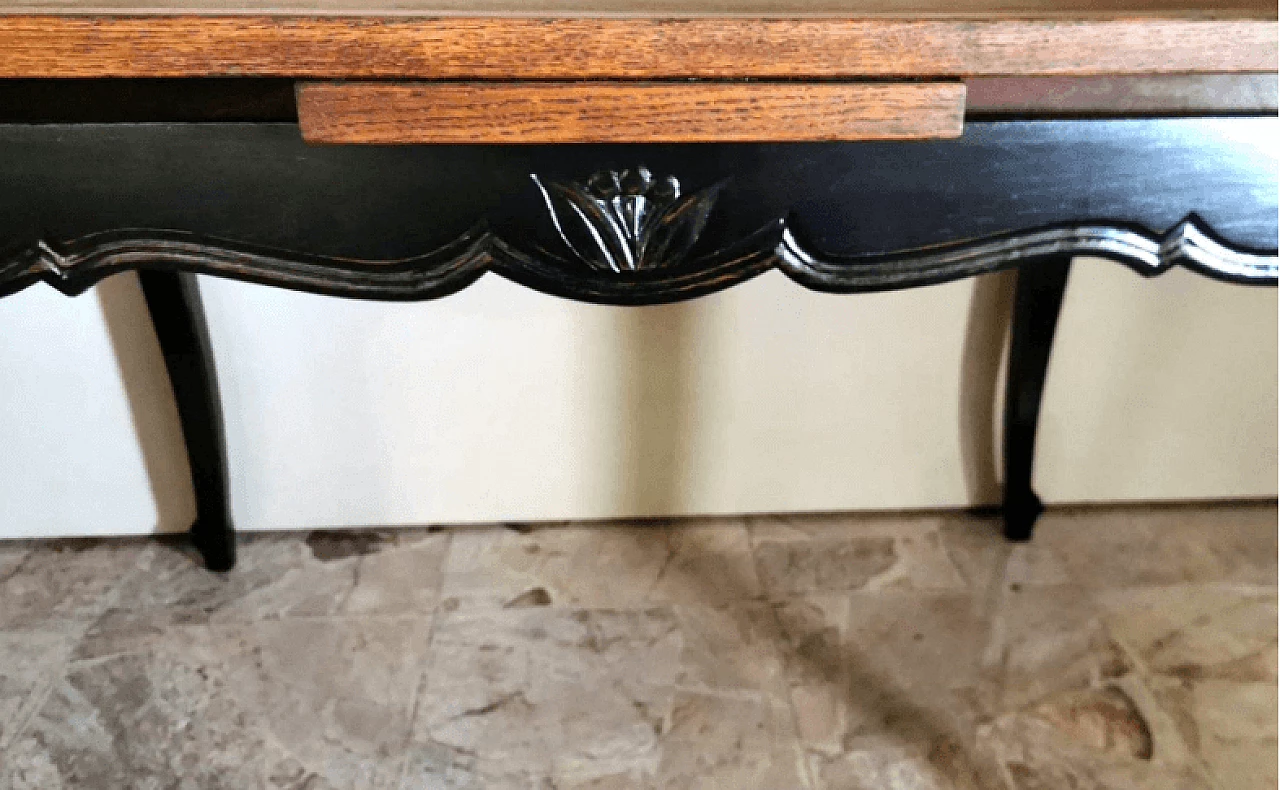
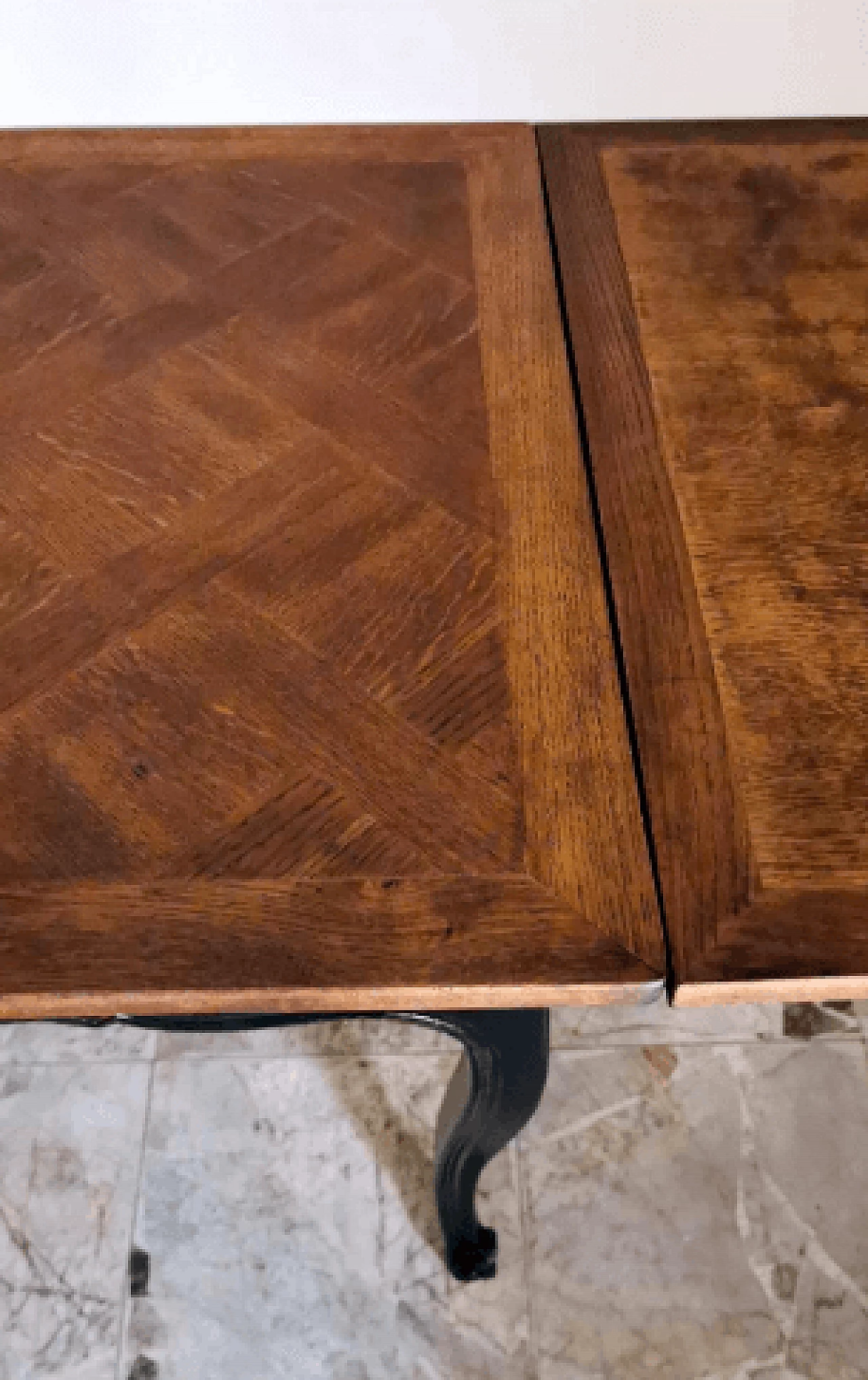
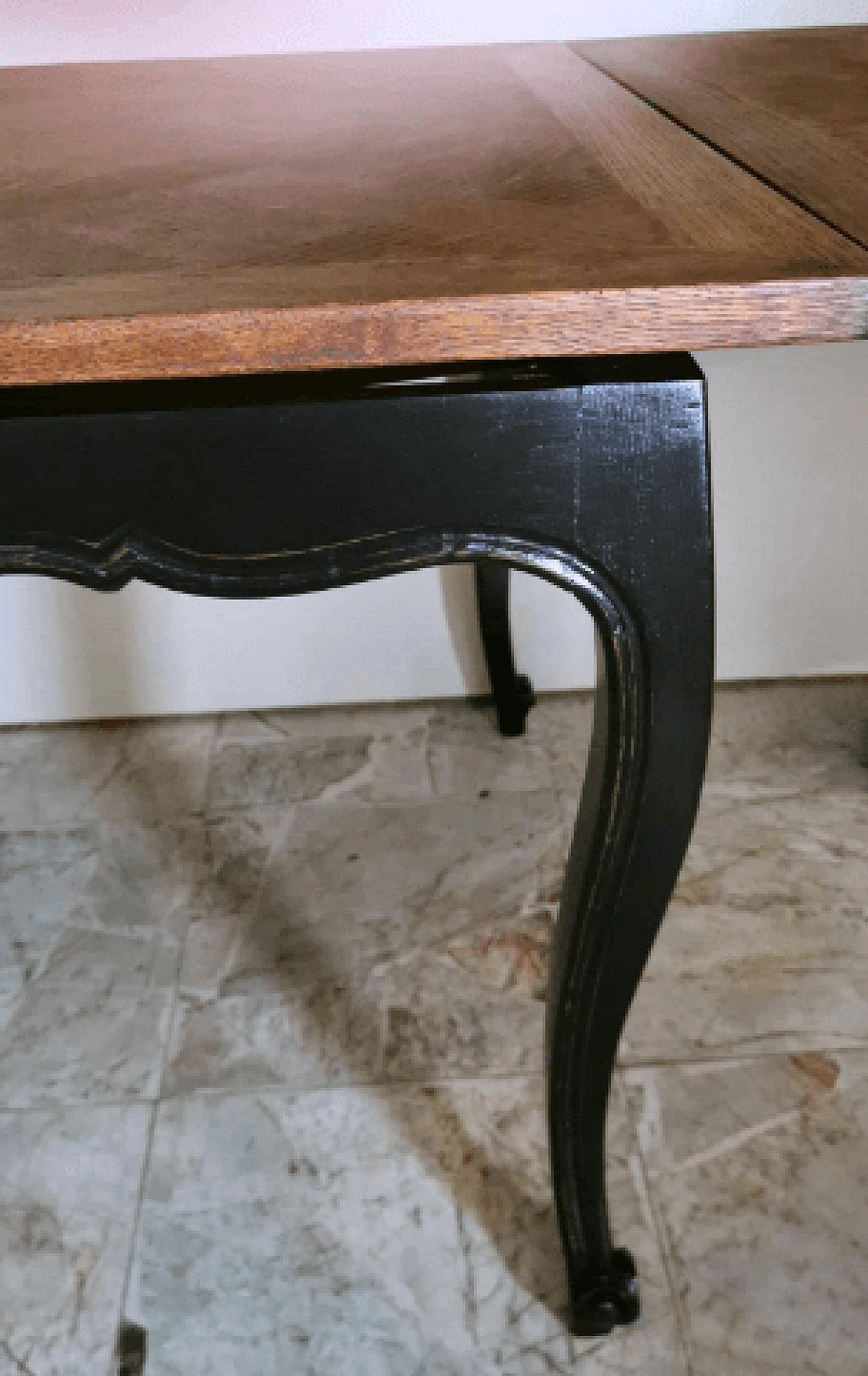
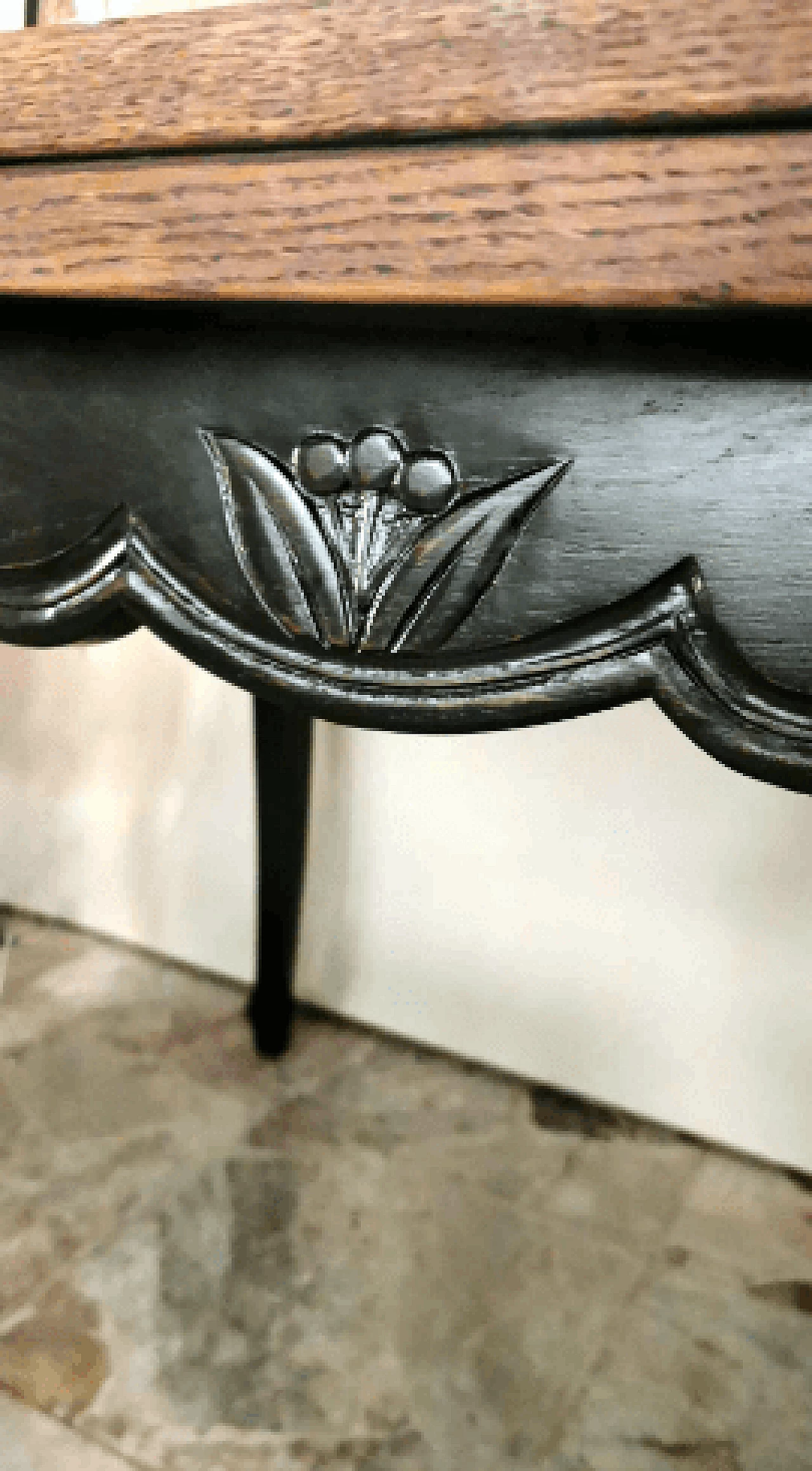
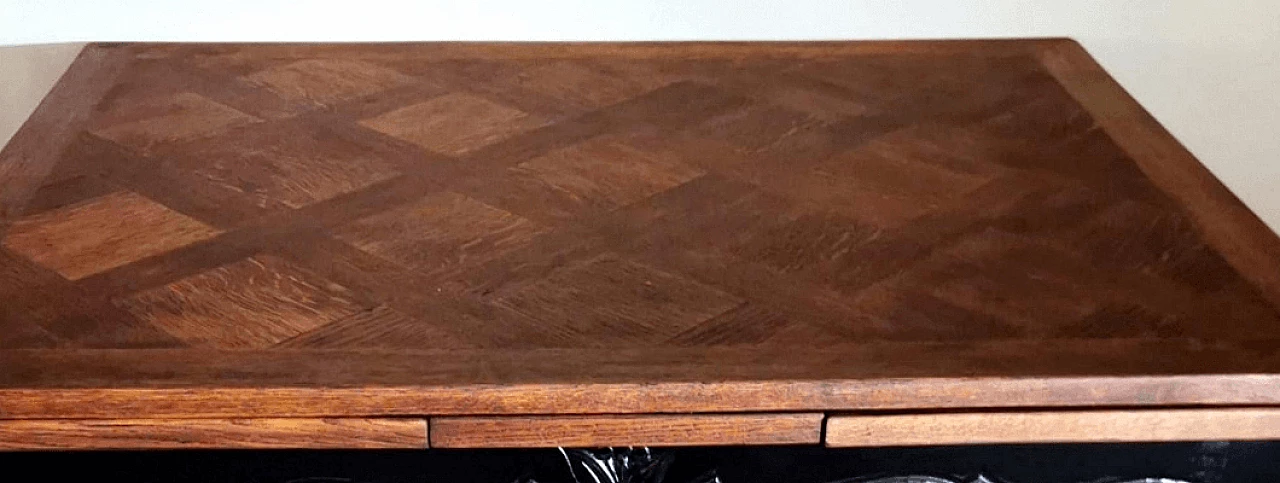
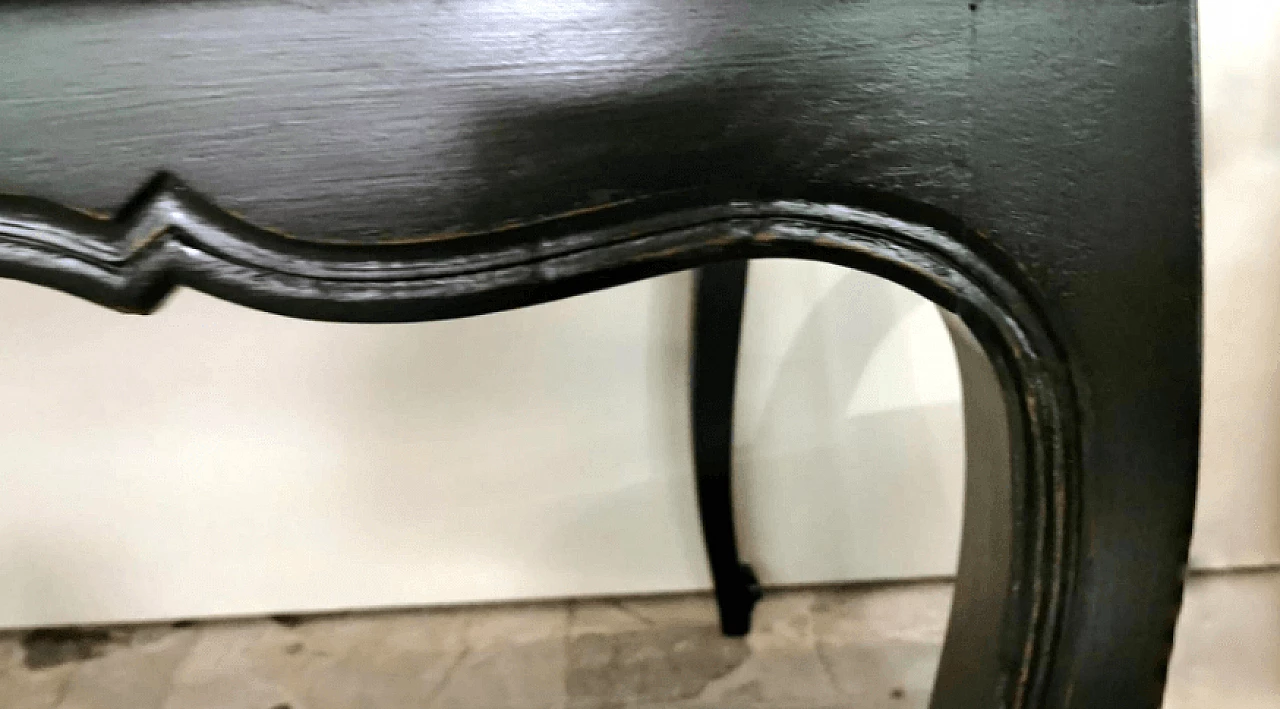
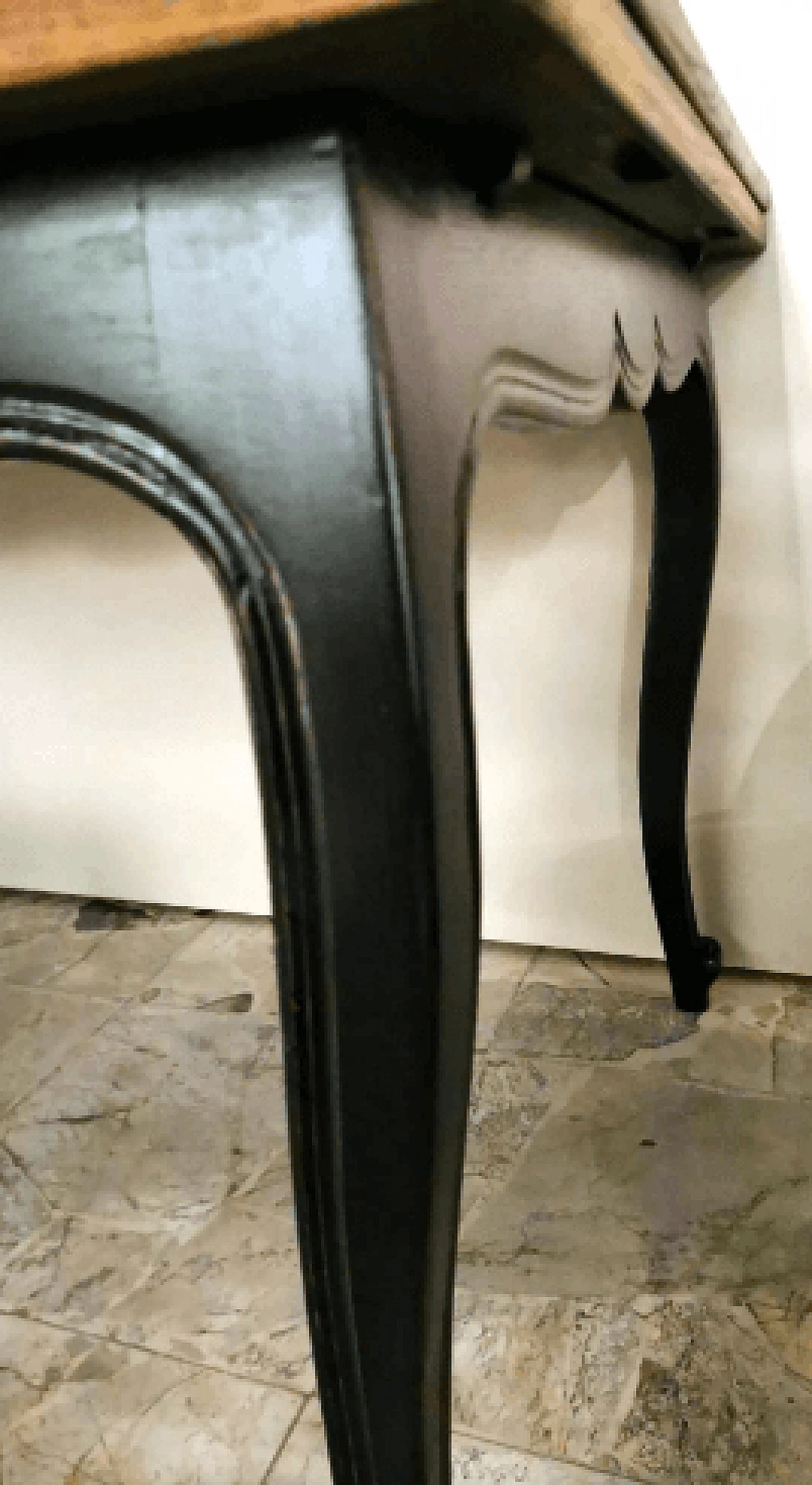
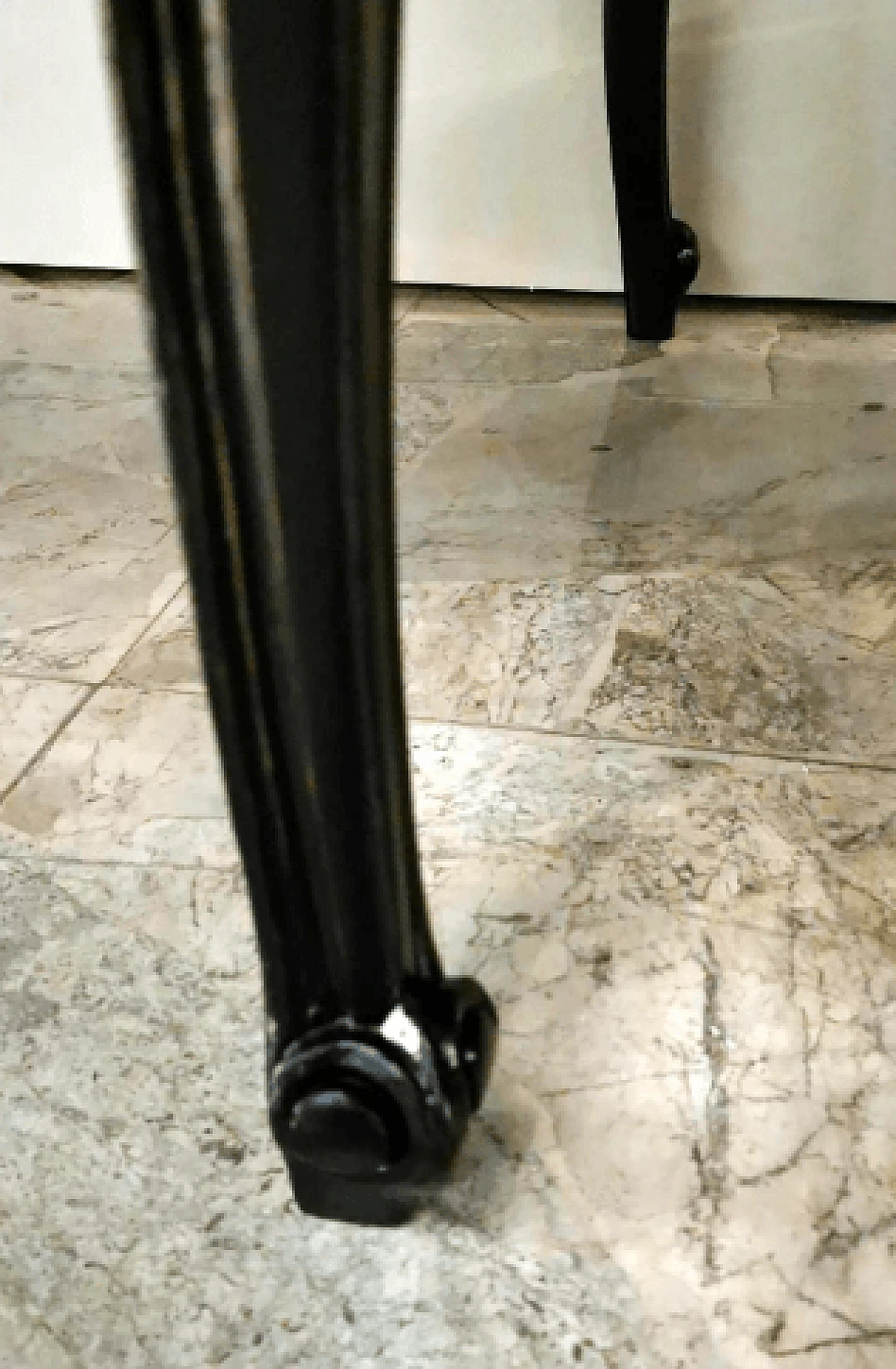
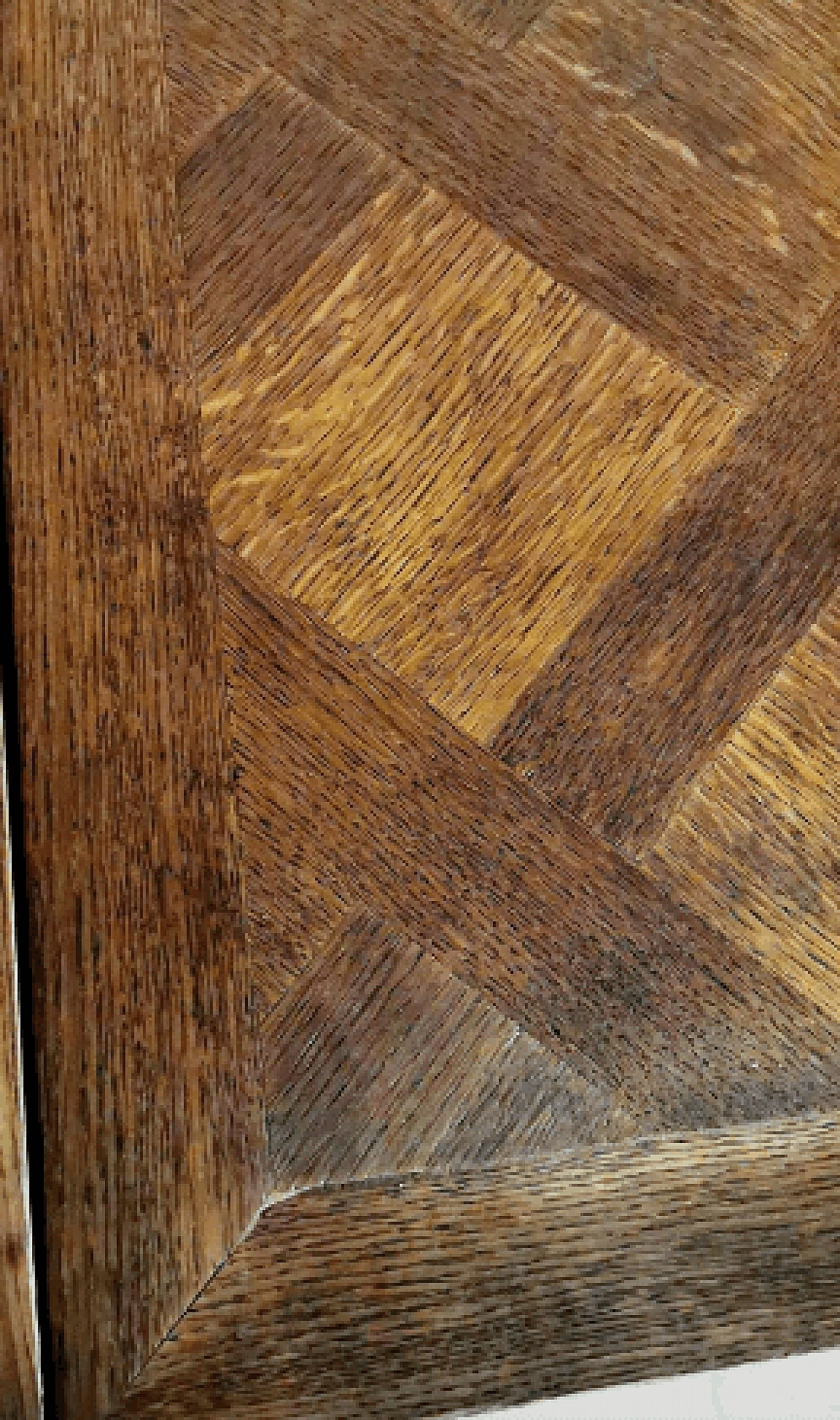
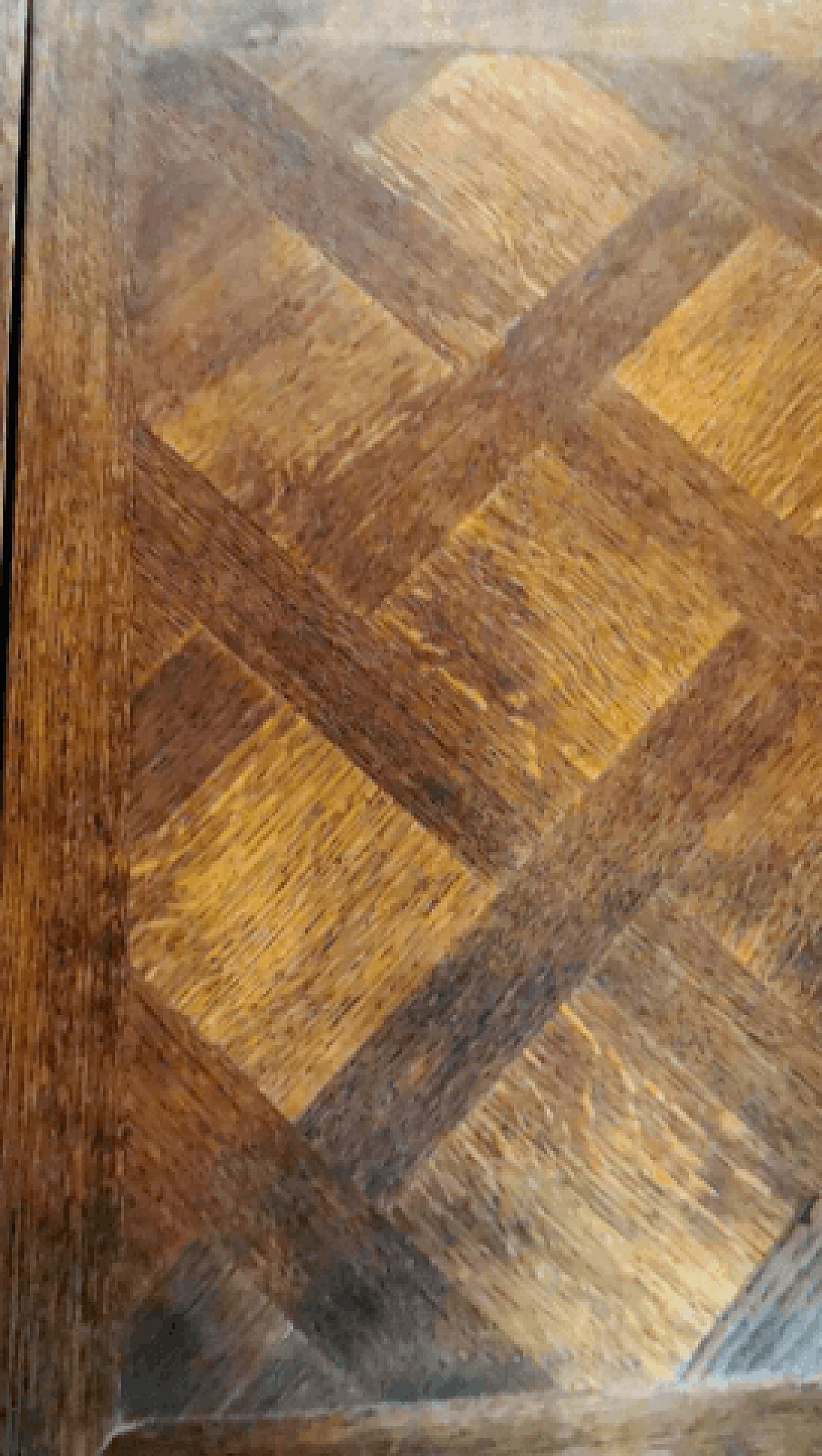
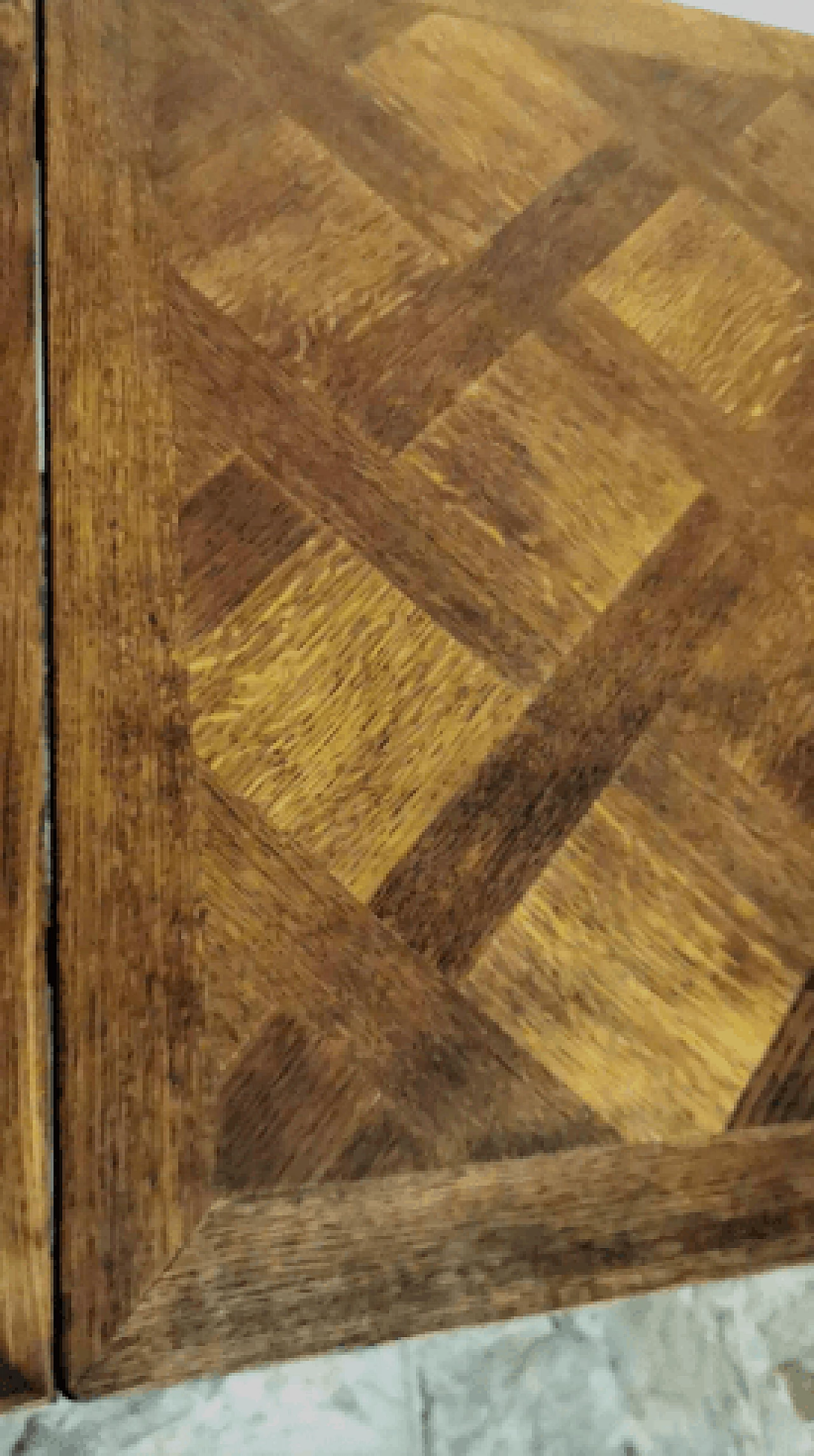
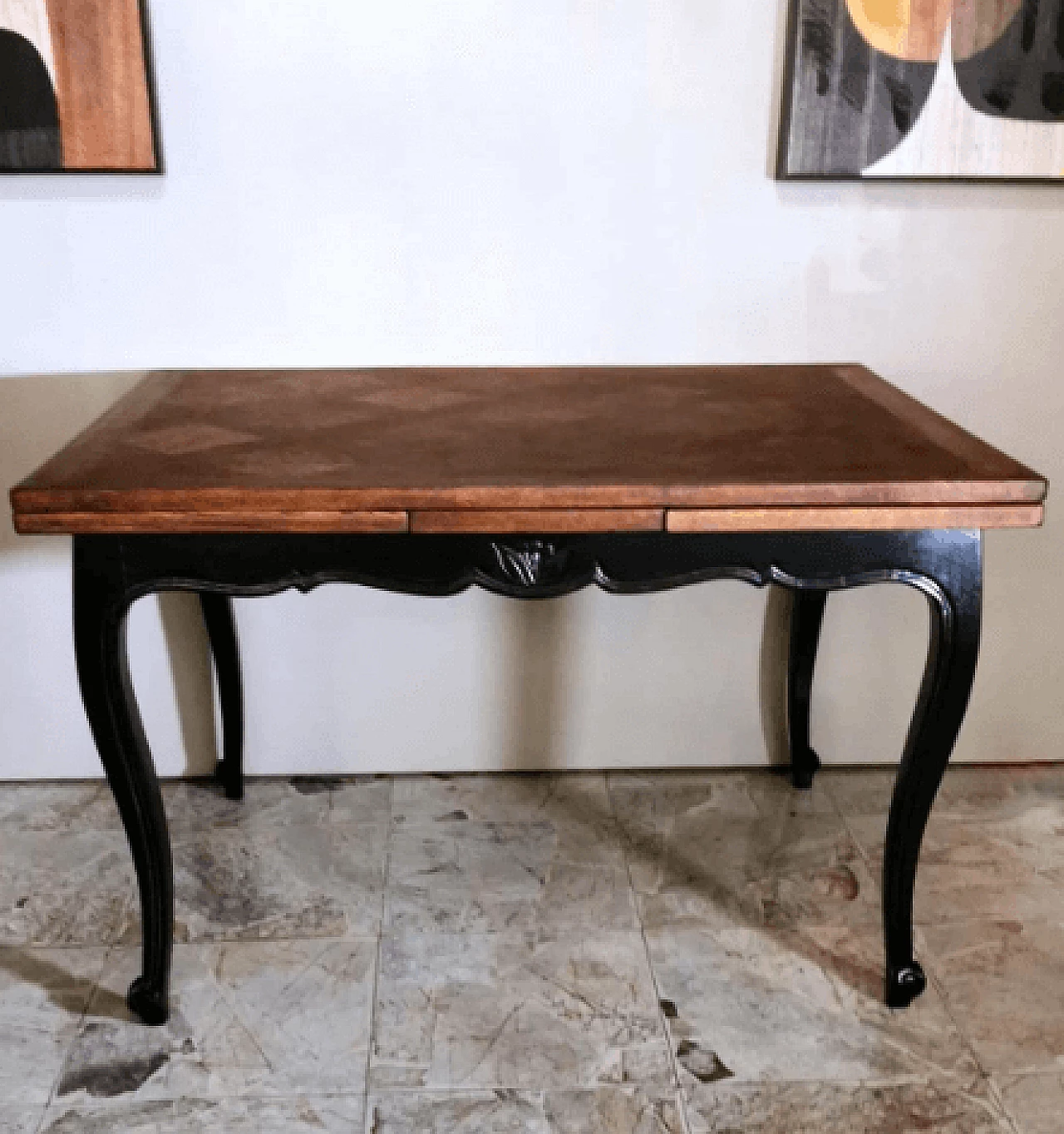
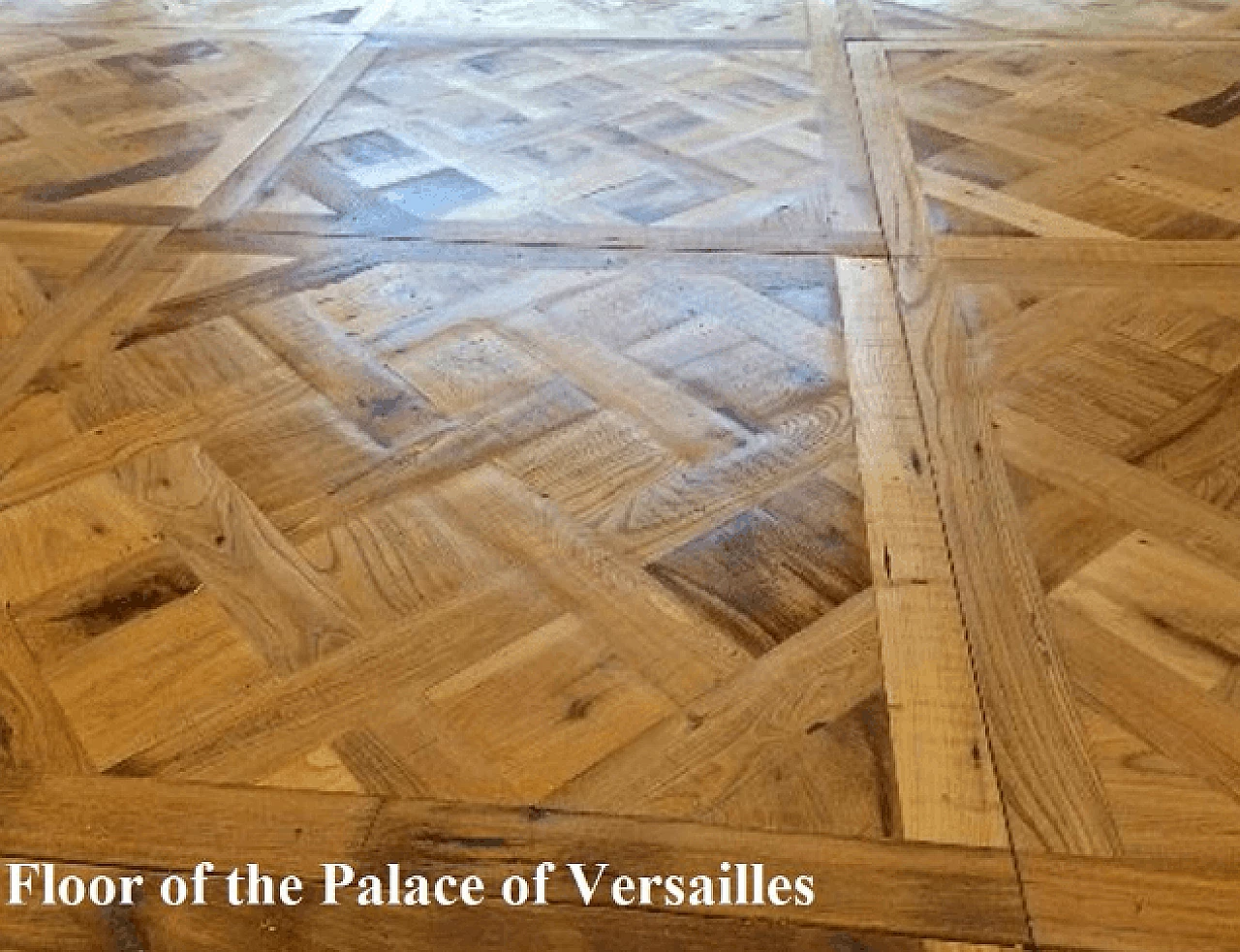




















French Provençal style extendable table made of oak wood. The top has a fine "parqueterie Versailles" finish; this name derives from the fact that the design of the decoration was based on the model of a floor of the Palace of Versailles. The bottom and legs are made of ebonized wood with some light carving. The legs are "cabriole", namely characterized by a design shaped in two curves, the upper one convex and the lower one concave; a shape known to the ancient Chinese and Greeks, which came back into fashion in Europe in the late 17th century, when it was incorporated into the more curvilinear styles introduced in England, France and Holland. The term parquet is of French origin and seems to have originated in the 17th century, a time when wooden floors were more widespread. The word derives from the technique of marqueterie or parqueterie, namely the inlay applied to fine furniture. The table extends easily; the two leaves slide out from under the top and fit perfectly with the top itself. This piece of furniture was created by a true master cabinetmaker in France between 1910 and 1915 in a workshop in the artisan area of Bru, in the Vosges department in the Grand Est region. The style is typically Provençal but the finish of the top and the choice to create a pleasant contrast, using black for the underlying part, giving it a strong aesthetic and making it much more elegant and refined than Provençal furniture which has soft and delicate colors. Maximum width: 210 cm. The object has been treated with ancient manual restoration techniques by our team of craftsmen and is in excellent condition.
ID: 4672-1674990520-55350
